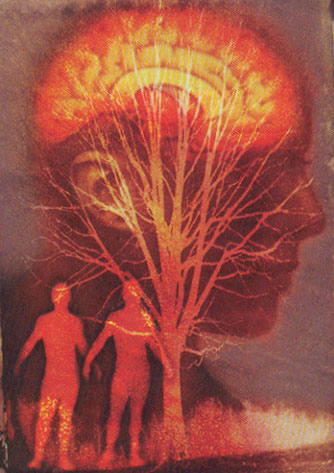 Creativity is closely linked to curiosity and exploratory behavior. It is also closely linked to sensation seeking – the desire to do new and different things. Why are people motivated to engage in creative acts? There are at least three reasons. 1) The need for novel, varied, and complex stimulation. One way to meet this need is to create or find new things that will stimulate our senses (for instance, new recipes, new art, or new cars) or challenge our intellects (for instance, new books, computers, or movies). 2) The need to communicate ideas and values. Concerned that children are dying of starvation, a photographer triggers our compassion with a picture of an emaciated child. 3) The need to solve problems. As we encounter new diseases or our business begins to fail, we search for answers that can give us hope.
Creativity is closely linked to curiosity and exploratory behavior. It is also closely linked to sensation seeking – the desire to do new and different things. Why are people motivated to engage in creative acts? There are at least three reasons. 1) The need for novel, varied, and complex stimulation. One way to meet this need is to create or find new things that will stimulate our senses (for instance, new recipes, new art, or new cars) or challenge our intellects (for instance, new books, computers, or movies). 2) The need to communicate ideas and values. Concerned that children are dying of starvation, a photographer triggers our compassion with a picture of an emaciated child. 3) The need to solve problems. As we encounter new diseases or our business begins to fail, we search for answers that can give us hope.Definition. A great deal of controversy surrounds the definition of creativity. Some writers have argued that creativity should be defined by problem-solving ability. By that definition, some of the world’s most famous paintings or novels might not be viewed as creative products. Other writers suggested that it is a personality trait. Such a definition suggests that some people are creative and others are not. Some writers have suggested a definition based on the production of ideas, which could exclude people who, although not good at producing ideas themselves, can recognize a creative idea or product when they encounter it.
All these various definitions offer useful ways of thinking about creativity. For our purposes, creativity is defined as the tendency to generate or recognize ideas, alternatives, or possibilities that can be useful in solving problems, communicating with others, and entertaining ourselves and others.
Creativity is often viewed as a playful activity in which we allow ourselves to reorder or recombine things in new and different ways. Researchers who have studied creativity often point out that creative people tend to act in similar ways to children. Creative people seem to have a sense of disinhibition. People who have studied creativity and documented the mental processes used in creativity have concluded that creativity is mental phenomenon that results from ordinary cognitive processes. Nonetheless, evidence demonstrates that certain intellectual and dispositional traits are inherited.
Taken together, the existing research suggests that one of the main factors in creativity is motivation, so therefore, creativity is open to anyone who is willing to develop the resources that are important for creativity to occur. Creativity is often viewed as a flow experience; it is an experience that brings joy and happiness.
Personality and creativity.
For some time, researchers have argued that a dispositional personality leads to greater creativity. Over the years, numerous researchers have conducted studies in an effort to identify this style. The research indicates that the creative people are disposed to be independent, nonconformist, unconventional, and even bohemian in their ways. Further, they are characterized by wide interests, greater openness to new experiences, conspicuous behavioral and cognitive flexibility, and the tendency to take more risks. Finally, one study found that in addition to being more open to experience, creative individuals, as compared with controls, were more neurotic.
Numerous researchers have suggested that many people, although potentially creative, inhibit creative behavior because it conflicts with conventional or traditional opinions. People characterized by rigidity might inhibit creativity because of their strong need for predictability. The idea that all people are potentially creative is consistent with observation that, when the right condition exist, generally uncreative people will suddenly demonstrate that they can be creative and that creativity can be increased through rewards.
Creativity involves at least five important steps: defining the problem, gathering information and knowledge, constructing images or categories, synthesizing, and withholding judgment.
Major creativity contributions tend to be made in young adulthood, whereas minor contributions tend to peak at middle age. The evidence suggests that motivation changes with age. Research on birth order indicates that later-borns are more likely to be creative than first-borns are.
"It's kind of fun to do the impossible"
Walt Disney
Walt Disney


1 comment:
thats awesome ,,,
I am interaction designer from India and belong to National Institute of Design, India
Lot of our work links with understanding users psychology.
please keep posting ,
I hope to have few more discussions with you.
http://www.itsallaboutcreativity.blogspot.com/
Post a Comment